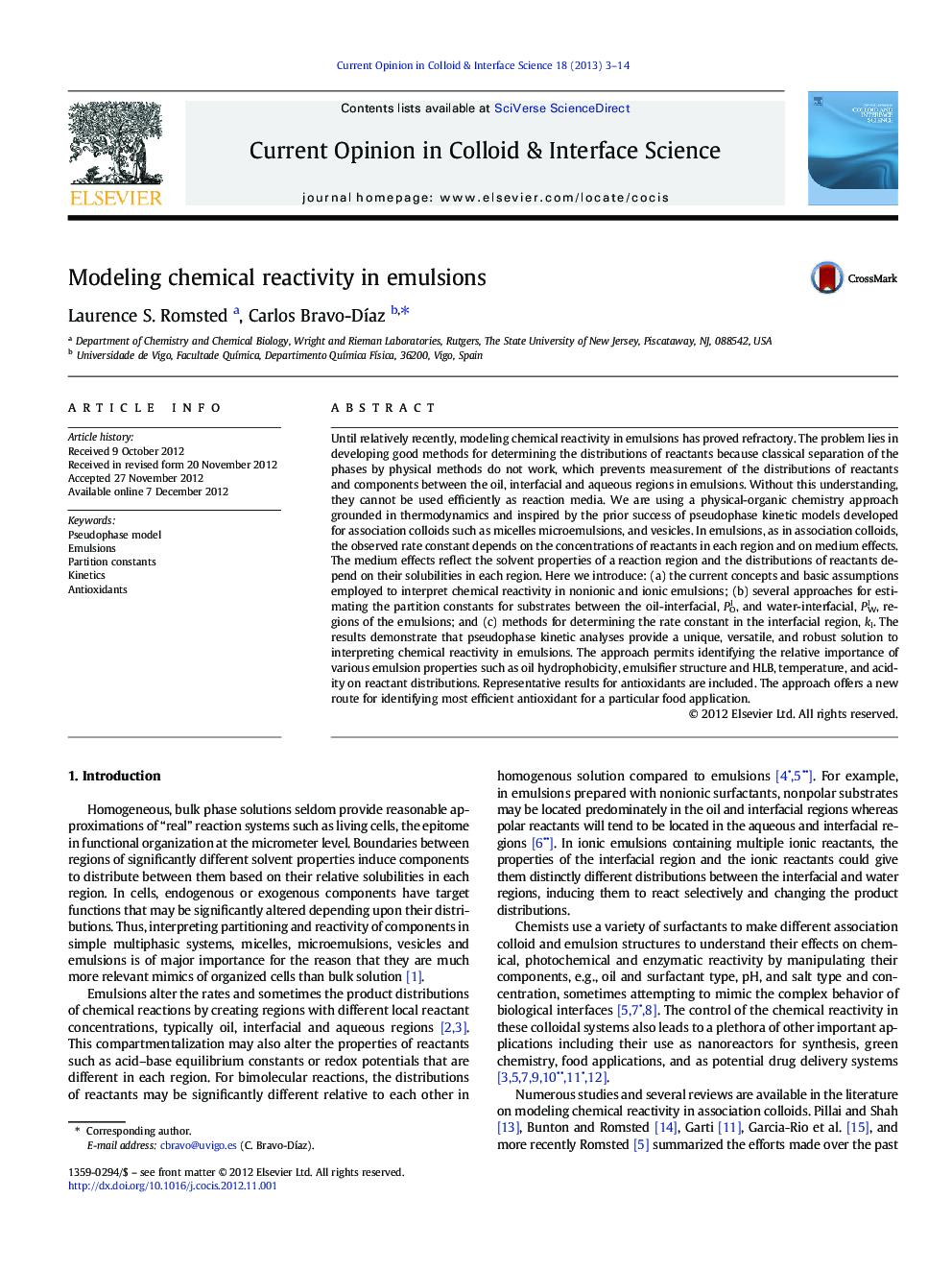| Article ID | Journal | Published Year | Pages | File Type |
|---|---|---|---|---|
| 603095 | Current Opinion in Colloid & Interface Science | 2013 | 12 Pages |
Until relatively recently, modeling chemical reactivity in emulsions has proved refractory. The problem lies in developing good methods for determining the distributions of reactants because classical separation of the phases by physical methods do not work, which prevents measurement of the distributions of reactants and components between the oil, interfacial and aqueous regions in emulsions. Without this understanding, they cannot be used efficiently as reaction media. We are using a physical-organic chemistry approach grounded in thermodynamics and inspired by the prior success of pseudophase kinetic models developed for association colloids such as micelles microemulsions, and vesicles. In emulsions, as in association colloids, the observed rate constant depends on the concentrations of reactants in each region and on medium effects. The medium effects reflect the solvent properties of a reaction region and the distributions of reactants depend on their solubilities in each region. Here we introduce: (a) the current concepts and basic assumptions employed to interpret chemical reactivity in nonionic and ionic emulsions; (b) several approaches for estimating the partition constants for substrates between the oil-interfacial, POI, and water-interfacial, PWI, regions of the emulsions; and (c) methods for determining the rate constant in the interfacial region, kI. The results demonstrate that pseudophase kinetic analyses provide a unique, versatile, and robust solution to interpreting chemical reactivity in emulsions. The approach permits identifying the relative importance of various emulsion properties such as oil hydrophobicity, emulsifier structure and HLB, temperature, and acidity on reactant distributions. Representative results for antioxidants are included. The approach offers a new route for identifying most efficient antioxidant for a particular food application.
Graphical abstractFigure optionsDownload full-size imageDownload high-quality image (168 K)Download as PowerPoint slideHighlights► We modeled chemical reactivity in emulsions by employing a pseudophase kinetic models. ► The partition constants and the rate constant in the interfacial region were evaluated. ► Kinetic analyses provide a robust solution to determining antioxidant distributions. ► The effects of parameters controlling distributions of antioxidants can be evaluated.
